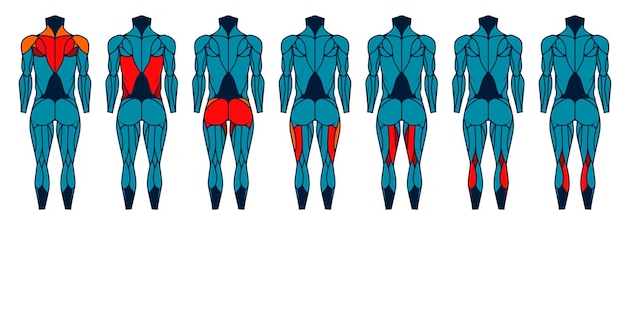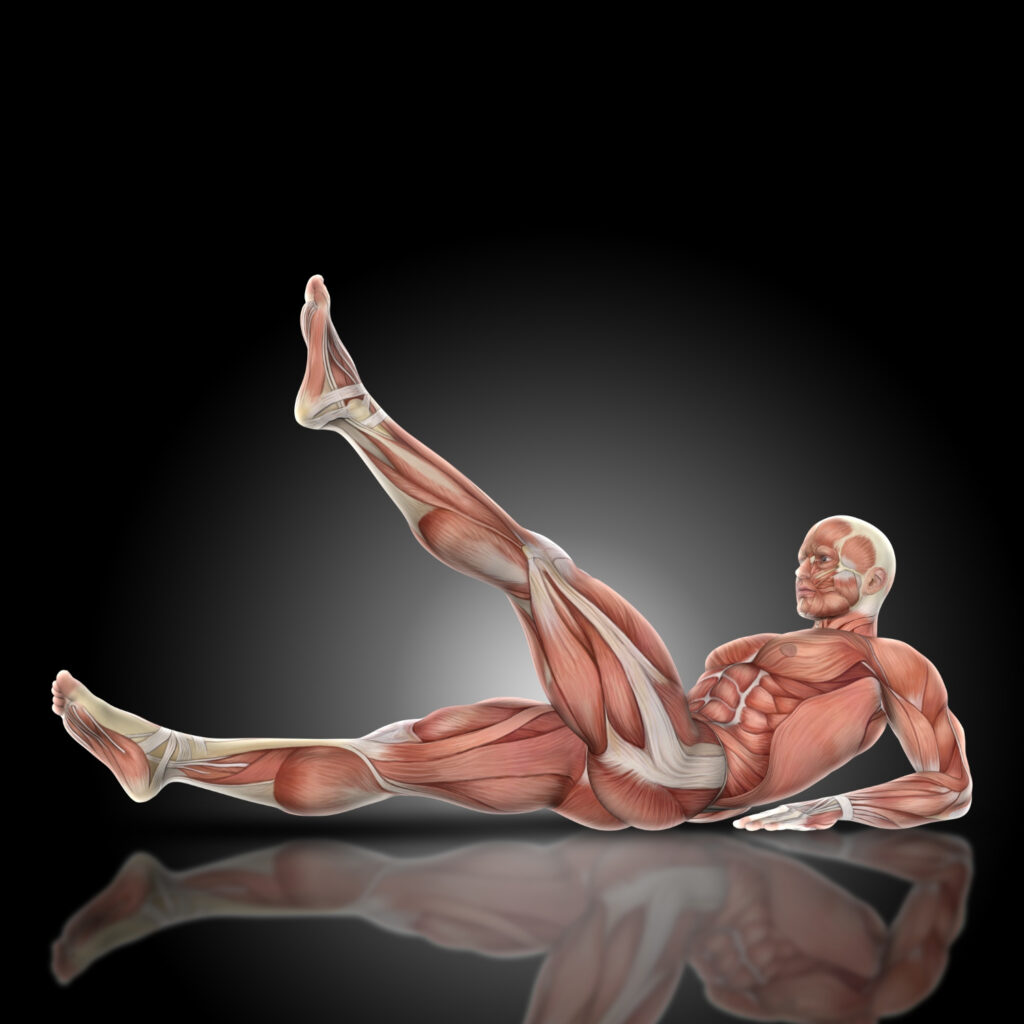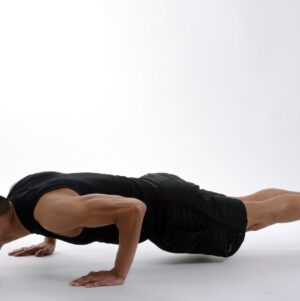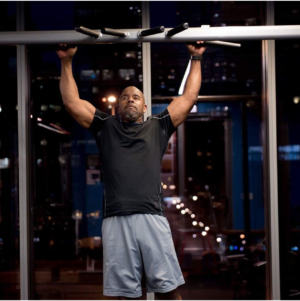Picture this: You’re in the gym, ready to take your workout to the next level. You’ve conquered pull-ups and dips, and now you’re eyeing a new challenge – the muscle-up. This advanced calisthenic exercise not only impresses onlookers, but it also engages multiple muscle groups, giving you a well-rounded routine. But before you dive into this exercise, it’s important to understand the muscles worked during muscle-ups and the proper technique to execute them.
What Are Muscle-Ups?
Muscle-ups, also known as bar muscle-ups or strict muscle-ups, are a bodyweight exercise that combines elements of pull-ups and dips. This compound movement requires upper body strength, coordination, and stability. By utilizing a pull-up bar or similar equipment, you can engage various muscle groups simultaneously.

Muscles Worked During Muscle-Ups.
To fully comprehend the benefits of muscle-ups and the impact they can have on your fitness journey, it’s crucial to understand the muscles targeted by this challenging exercise. Let’s dive into the primary muscle groups worked during muscle-ups:
1. Triceps
The triceps muscles, located at the back of your upper arm, play a significant role in the execution of muscle-ups. As you push yourself up from the lower position of the movement, your triceps contract to extend your elbows, enabling you to reach the final position.
2. Lats
The latissimus dorsi, commonly referred to as the lats, are the largest muscles in your back. During muscle-ups, the lats are heavily engaged in the pulling phase of the exercise. They assist in bringing your body upward, allowing you to transition from the initial hanging position to the final position above the bar.
3. Deltoids
The deltoid muscles, also known as the delts, are located in your shoulders and consist of three distinct heads: anterior, medial, and posterior. Muscle-ups target all three heads of the deltoids, as they are responsible for shoulder abduction, flexion, and extension throughout the exercise.
4. Pectorals
Your pectoral muscles, commonly referred to as pecs, are located in your chest. They play a crucial role in the muscle-up movement, particularly during the transition from the pulling phase to the pushing phase. The pecs assist in stabilizing your upper body and generating the necessary force to push yourself above the bar.

The Proper Technique for Muscle-Ups.
Executing muscle-ups with proper form is essential to maximize their effectiveness and minimize the risk of injury. Let’s break down the step-by-step process to perform a muscle-up correctly:
- Grip and Positioning
- Start by using a false grip on the pull-up bar, placing your hands slightly wider than shoulder-width apart.
- Allow your legs to hang freely, ensuring your arms and legs are fully extended with a slight bend in your elbows.
- Engage Your Core and Lower Body
- Activate your glutes and quads while engaging your core.
- Keep your ribs down and your pelvis slightly tucked.
- Shoulder Positioning and Initiation
- Maintain your shoulders in a neutral position, avoiding excessive rounding or shrugging.
- Pull down on the bar explosively, using your lats and triceps to generate upward momentum.
- Allow your legs to swing forward slightly during this pulling phase.
- Transition and Pushing Phase
- Once your chest surpasses the bar, slightly lean forward and push your upper body forward.
- Straighten your elbows to push your body upward, transitioning from the pulling phase to the pushing phase.
- Dip Down and Rotate
- Begin bending your elbows slowly, initiating the dip down.
- Once your chest reaches the bar, rotate your upper body back, preparing for the descent.
- Lowering to Starting Position
- Lower your body back to the starting position, maintaining control and stability throughout the movement.
Mastering the proper technique for muscle-ups may take time and practice. Be patient with yourself, gradually increasing the intensity and difficulty of your workouts as you build strength and coordination.
Unlocking Your Strength Potential with Muscle-Ups
Incorporating muscle-ups into your workout routine can yield various benefits beyond simply targeting specific muscle groups. Let’s explore some of the advantages that muscle-ups offer:
1. Full-Body Engagement
Muscle-ups engage multiple muscle groups simultaneously, providing a comprehensive full-body workout. This compound movement challenges not only your upper body strength but also your core stability and lower body control.
2. Improved Upper Body Strength
As muscle-ups primarily target the upper body, they can significantly enhance your upper body strength. The combination of pulling and pushing movements strengthens your back, shoulders, arms, and chest, allowing you to conquer other exercises with greater ease.
3. Enhanced Functional Strength
Muscle-ups simulate real-life movements, such as climbing or pulling yourself up over an obstacle. By incorporating this exercise into your routine, you can develop functional strength that translates to daily activities and sports performance.
4. Increased Core Stability
To execute muscle-ups effectively, you must engage your core to maintain stability throughout the movement. This engagement strengthens your abdominal muscles, lower back, and hips, promoting better posture and overall core strength.
5. Progressive Overload and Adaptation
Muscle-ups provide an opportunity for continuous progression and adaptation. As you become proficient in the exercise, you can modify the intensity by adding weight, performing slower repetitions, or incorporating variations such as strict muscle-ups or kipping muscle-ups.

Conclusion.
Muscle-ups are a challenging yet rewarding exercise that targets multiple muscle groups and offers a wide range of benefits. By incorporating proper technique and gradually increasing the intensity, you can unlock your strength potential and take your fitness journey to new heights. Remember to prioritize form, consistency, and patience as you master this advanced calisthenic movement.
Now that you understand the muscles worked during muscle-ups and the proper technique for execution, it’s time to put your knowledge into action. Add muscle-ups to your routine, challenge yourself, and embrace the transformative power of this dynamic exercise.
Disclaimer: Always consult with a qualified fitness professional or trainer before attempting advanced exercises like muscle-ups, especially if you have any pre-existing medical conditions or injuries. Safety should always be your top priority.
Additional Information.
The phrase “muscle up muscules worked” is a valuable keyword to optimize the SEO of this article. By incorporating this key phrase throughout the text organically, we can increase the visibility and ranking of the article. Additionally, using the secondary keyword “muscle up crossfit” strategically will attract readers interested in the intersection of muscle-ups and CrossFit training.


